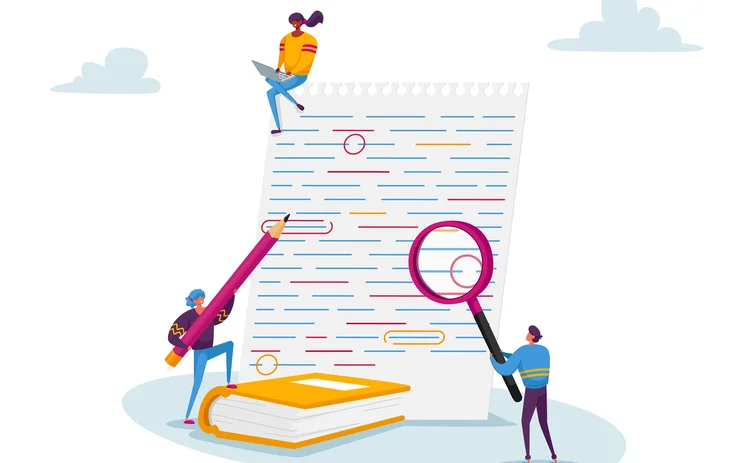
To what extent has SmartStream infused its entire product portfolio with AI technology? How is that strategy progressing and how does it align with the firm’s managed services push?

Victoria Harverson: It’s going really well. Our Innovation Lab in Vienna is responsible for our innovation and incubation functions, and it serves the whole of SmartStream. Given that we’re a multiproduct company, we serve many different market segments and so this function is extremely important for us. AI is embedded within nearly all of our solutions and it’s in our managed services offering where it is being used to create efficiency gains for our customers.
What we are really focusing on with our AI strategy is observational learning. If you consider how humans learn most effectively, the key is mimicking behavior. For example, we tend not to read cookbooks anymore—we prefer to follow steps and rules and to watch someone perform the task and then copy it. SmartStream calls this type of technology Affinity. It learns patterns, identifies records that belong together and observes how users behave. Once trained, Affinity provides suggestions to users and builds up a confidence level in the machine learning model.
What does the AI functionality within SmartStream Air allow users to do practically when it comes to managing reconciliations? How does it impact their day-to-day operations/reconciliations roles?
Victoria Harverson: Traditionally, with a reconciliation solution, you need to do some “ETL”—extract, transform and load—and normalization so that you can clean up some of the data before you start to reconcile it. We remove the need to do that through SmartStream Air, our AI reconciliation platform. Users can simply kick off with up to 10 different datasets or data sources.
This can be quite messy data—they don’t need to normalize it and clean it up, they can load it straight into Air—and at this point, users don’t even really need to understand the data. They simply hit start and the Lightning Engine (the unsupervised AI learning technology and matching engine within SmartStream Air) kicks in and starts looking at the data. It is designed to look at data and develop matching rules autonomously. If you think about taking 10 decks of playing cards and scattering them on the floor, the AI will pick up what it believes the matching pairs should be. It then presents the logic around how and why it matched those records to the end-user.
To what extent does SmartStream’s AI technology allow users to understand how results were obtained? Is SmartStream’s AI functionality transparent “white box” technology as opposed to opaque “black box” technology?
Victoria Harverson: We are leading the AI push through our white-box thinking. The Lightning Engine is fully white box in the sense that it generates the rule/matching logic and users can see it. Users also need to be able to look at that logic, confirm it and then move on to the next step of the reconciliation process. The whole process is totally transparent. With Affinity, every match is a combination of factors that the AI is looking for, and we show that rationale in some detail—we show the underlying logic about why the AI gave a user a particular record. Also, the way we are translating the user experience (UX) into the look and feel [of the Air platform] works with this type of AI. For us to make AI work as a product, our customers need to trust us and be able to look under the hood and see what we have done to give them a result in a way they can easily understand.
What can clients expect from SmartStream on the AI front going forward? Is there anything special planned for the foreseeable future?
Victoria Harverson: We have been working on a new look and feel in terms of exception management workflows within SmartStream Air. By exception management, I mean users might find a break or error in the data that they need to resolve by putting it through a workflow. This is typically a long process and currently isn’t well automated—there are a lot of manual touchpoints. Soon we’ll be able to observe the human interactions and follow what the user did to resolve the exception. Users will then be able to say: “We’ve seen a deal like this before—this is how we resolved it, and we want to do that again.” We’ve just applied an amazing UX design to that process and we’ll launch it soon. I’m pretty sure that it’s going to be very different to what anyone in the industry has seen before.
Sponsored content
Copyright Infopro Digital Limited. All rights reserved.
As outlined in our terms and conditions, https://www.infopro-digital.com/terms-and-conditions/subscriptions/ (point 2.4), printing is limited to a single copy.
If you would like to purchase additional rights please email info@waterstechnology.com
Copyright Infopro Digital Limited. All rights reserved.
You may share this content using our article tools. As outlined in our terms and conditions, https://www.infopro-digital.com/terms-and-conditions/subscriptions/ (clause 2.4), an Authorised User may only make one copy of the materials for their own personal use. You must also comply with the restrictions in clause 2.5.
If you would like to purchase additional rights please email info@waterstechnology.com
